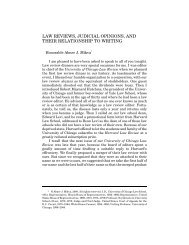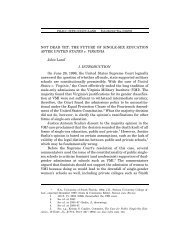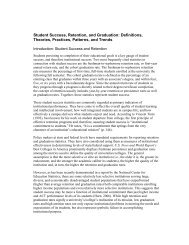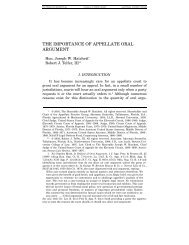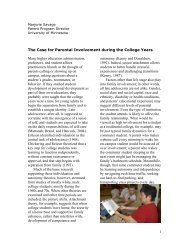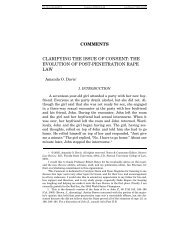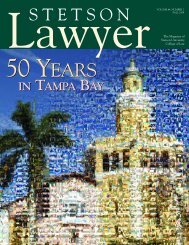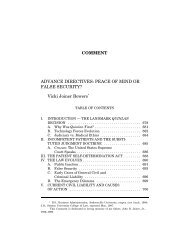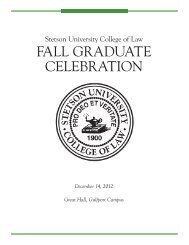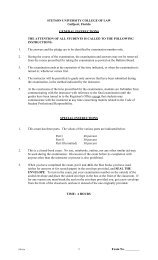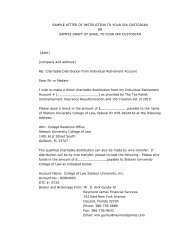Evidence-speak for Trial Lawyers - Stetson University College of Law
Evidence-speak for Trial Lawyers - Stetson University College of Law
Evidence-speak for Trial Lawyers - Stetson University College of Law
You also want an ePaper? Increase the reach of your titles
YUMPU automatically turns print PDFs into web optimized ePapers that Google loves.
C:\MyFiles\book\Articles.311\Galleys\Ohlbaum5.drb.wpd26 <strong>Stetson</strong> <strong>Law</strong> Review [Vol. XXXIonly when there is a sufficient factual basis <strong>for</strong> it. Whether a factualbasis is sufficient with pro<strong>of</strong> <strong>of</strong> observation <strong>of</strong> the behavior or eventin question or whether it requires a description <strong>of</strong> the behavior orevidence <strong>of</strong> the witness’s life experience with the behavior, arematters within the discretion <strong>of</strong> the trial court. 60 Yet, effectiveadvocacy dictates that the more detail the witness provides, themore persuasive the witness’s opinions will be. For example,although it may be permissible <strong>for</strong> a witness to testify that he or she“watched the man pause and collect himself,” a witness is far morepersuasive if he or she describes a man who “stopped walking,straightened himself up, put his hands on his face, pushed his hairdown with his hands, and then ran his hands down his shirt andpants,” be<strong>for</strong>e venturing the opinion that the man “paused to collecthimself.”E. Hearsay FoundationsStatements that the rule against hearsay 61 would otherwise barare admissible if they are made under specifically defined circumstancesthat demonstrate their underlying reliability. 62 Thesecircumstances have been codified as the hearsay exceptions. 63 Eachexception specifies requirements that, when met, permit the courtto admit the statement. 64 Whether these requirements have beenmet, and whether other grounds <strong>for</strong> exclusion have been eliminated,65 are determinations <strong>for</strong> the court. 66 In making these determinations,the court may consider evidence that is inadmissible itself,60. Fed. R. Evid. 104(a).61. Hearsay is defined as a “statement, other than one made by the declarant whiletestifying at the trial or hearing, <strong>of</strong>fered in evidence to prove the truth <strong>of</strong> the matterasserted.” Fed. R. Evid. 801(c).62. For definitions <strong>of</strong> circumstances underlying reliability, see Federal Rules <strong>of</strong> <strong>Evidence</strong>803, 804, and 807.63. Fed. R. Evid. 803; Fed. R. Evid. 804; Fed. R. Evid. 807.64. Fed. R. Evid. 802 (2000).65. According to the rules, a statement that qualifies as a hearsay exception must berelevant, based on firsthand knowledge, stated by a competent witness, properlyauthenticated, and an original document where the contents <strong>of</strong> a writing are <strong>of</strong>fered. Seegenerally Fed. R. Evid. 401 (2000) (defining relevant evidence); Fed. R. Evid. 601 (“Everyperson is competent to be a witness”); Fed. R. Evid. 602 (stating that a witness must havepersonal knowledge <strong>of</strong> a matter in order to testify to that matter); Fed. R. Evid. 901 (2000)(giving the requirements to authenticate evidentiary evidence <strong>for</strong> admissibility); Fed. R. Evid.1002 (requiring the original document when that document is used to prove its contents).66. Fed. R. Evid. 104(a).



